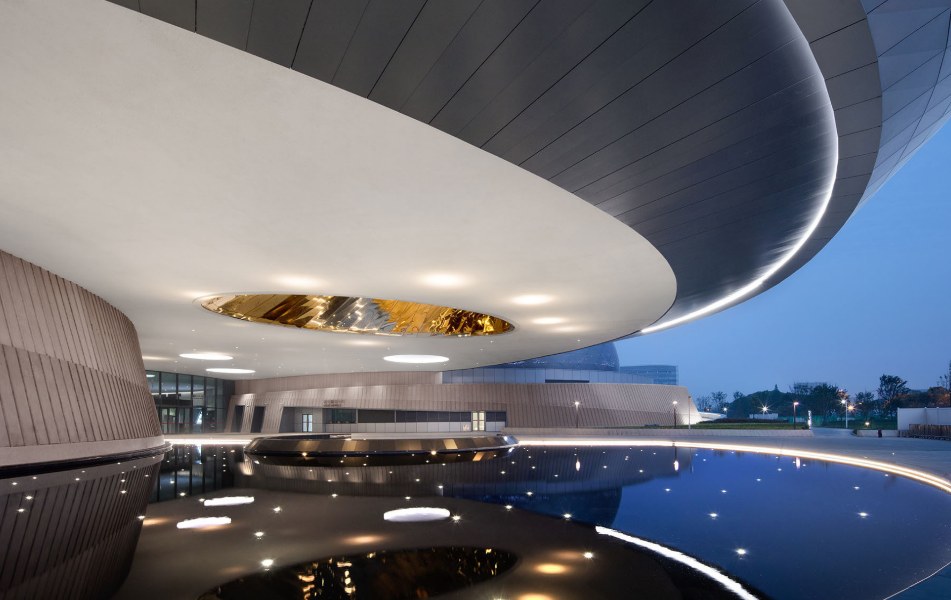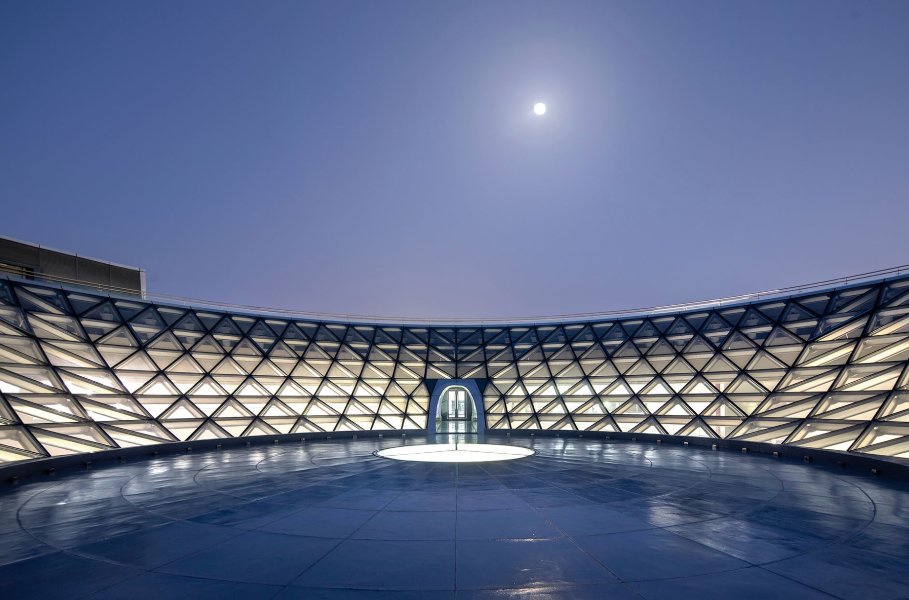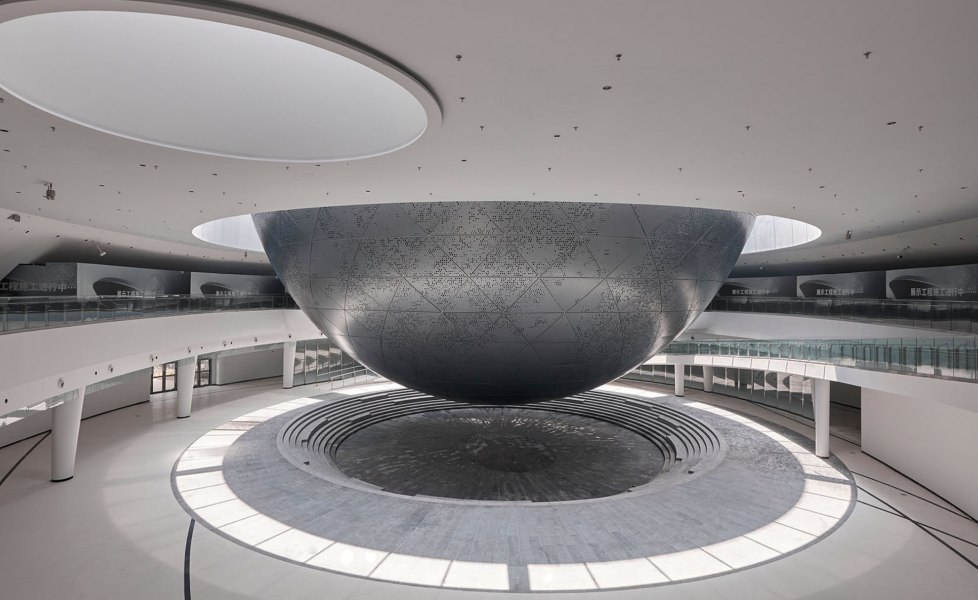The museum’s architects note the unsolved mathematical “three-body problem” as an influence for its design.
READ ALSO: Quarantine Activity: Digitally Experience The Louvre Through Its New Online Platform
At 420,000 square feet, the Shanghai Astronomy Museum is the largest-ever establishment dedicating to our vast universe. Designed by Thomas J. Wong of Ennead Architects, the museum that opened to the public last July 18 was drawn up without straight lines or right angles—just like the cosmos.
“The big idea of the Shanghai Astronomy Museum was to infuse a visceral experience of the subject matter into the design,” says Wong in a press release.

The Oculus, Inverted Dome, and Sphere are the building’s three main architectural and functional sections. First off, The Oculus is the museum’s main entrance which acts as a timepiece, and it uses a light source to display the current season and time of day. Secondly, the Inverted Dome is of glass materials and allows visitors an unobstructed view of the open sky.

And lastly, the Sphere is a planetarium theatre. It’s an enclosed structure that peaks from the building’s roof and looks like it’s floating mid-air with space to walk beneath it.

Beyond Earth
In a statement, Wong shares that they aim to “illuminate” what it means to be human in a vast and largely unknown universe beyond scientific content. In relation to that, Wong and his team of architects were highly influenced by the “three-body problem” in the astronomy museum’s design process.
The mathematical problem is on how to calculate the motion of the planets, moons, and stars based on their gravitational relationships.
“The reason why we thought the three-body problem was interesting is that it’s a complex set of orbits,” Wong explains to CNN. “[These are] relationships that are dynamic, as opposed to a simple circle around the center. And that was part of the [design’s] intent—to capture that complexity.”
Space-themed exhibitions, a planetarium, and a 78-foot-tall solar telescope await visitors of the award-winning building, a branch of the Shanghai Science and Technology Museum. However, China remains closed to leisure travelers from most countries.
Nevertheless, it’s exciting to know that once travel becomes entirely safe again, there’s a fascinating new attraction to marvel at celestial bodies, learn about astronomy, and experience groundbreaking architecture within our continent.
Banner photo from ennead.com





